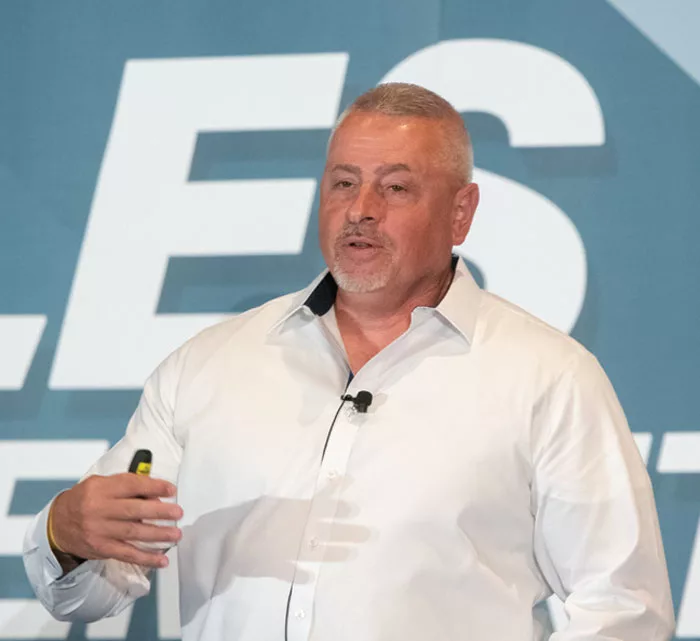Federico Lamas, the vice president and corporate sales manager for the 6-store John Deere dealership in Virginia and West Virginia, explains that properly and individually incentivizing your salespeople drives the best results both for the business and the employee.
“I create custom fitted pay plans for all new hires. Not all salespeople are created equal. That’s why I don’t have cookie-cutter approaches,” Lamas says, noting that his dealership’s process may not work for everybody. However, finding the right compensation plan should be a collaborative effort between the employee and their supervisor that takes into account the salesperson’s needs and the needs of the company.
In conjunction with harmonizing these needs and expectations, one of the determining factors on whether a plan is going to work is if it’s supported by leadership.
“It starts at the very top, and it trickles down to your people,” Lamas says. “So whatever pay plan you come up with, if you don’t support it, endorse it, believe it, and create the culture in your company that this is what’s right for us as well as for you, it’s never going to work no matter what.”
Key Aspects Of A Good Compensation Plan
- It must be simple to understand
- It should attract people to your organization
- It should motivate employees to contribute their best
- It should be consistent with what competitors are paying
- It should factor in the cost of living
- There should be incentives so that employees that excel earn more than their fellow employees. Those incentives must be realistic and attainable
Building a Pay Plan that Works
When developing this type of pay plan for your company, Lamas explains some of the key aspects to take into consideration.
The sales compensation plan should be straightforward and easy to understand so it doesn’t deter employees. It should also attract people to your company. If a pay plan is successful, your team should be able support itself and feel it’s receiving competitive market compensation.
Similarly, pay plans should factor in cost of living. Lamas explains that because he has salespeople living in 5 of the wealthiest counties in the U.S., he has to tailor his pay plans to account for that difference in cost of living across his team.
When focusing on how to incentivize employees, Lamas emphasizes learning what makes each individual salesperson tick, figuring out what drives them. For most people, he says, this is money. However, if someone is motivated by a yearly vacation or a new car, this can also serve as an incentive for achieving the company’s desired results.
These desired results must be clear and attainable for the employee or it will not properly motivate them.
“I give my team unit, dollar, gross profit and service plan targets each year. I am that specific. I want you to sell this many of this type of equipment. I want you to sell this many dollars this year,” Lamas says. “And I present it in a chart to them. They each get it at the beginning of the year, and then we stay on top of it.”
By reviewing performance monthly, quarterly and annually, both he and his salespeople understand where they stand. And because expectations are so clear, Lamas can identify any issues quickly and correct them early.
When performance is reviewed at the end of the year, so is the pay plan. If the salesperson is excelling, their pay plan might increase. Each plan may change for a variety of reasons specific to the individual, the economic climate and the performance of the company.
Commission Structure
Most of Virginia Tractor’s compensation plans are salary plus commission, and this structure ranges from 5%-25% of gross profit for that year. Depending on the performance of the salesperson, they may receive a 10% or 20% bonus.
Lamas also pays commission based on 2 additional sales metrics.
Commission Opportunities
- Parts and Service Business
- 5%-10% of gross sales per year
- Prepaid Service Agreements
- 3%-12% of gross sales per year on a tier system
Bonus Structure
- 5%-25% gross profit generated by employee
The first is parts and service business brought in by the salesperson. Because customers buy from people they trust and like, Lamas uses those existing connections an employee has to solicit parts and service business. While Virginia Tractor does have an account manager, especially for A and B accounts, once a salesperson brings in a new customer, they become the exclusive point of contact for that customer in order to build a relationship with them. This commission is paid out at 5%-10% of gross sales for that employee.
The second way that a salesperson can get additional commission is through prepaid service agreements. Pitching these plans is mandatory for all salespeople and are, according to Lamas, a big money maker for Virginia Tractor. The commission for that is 3%-12% of gross sales on a tier system. Depending on sales from the service plans, they may move up or down a percentage tier.
Because there are several ways for salespeople to earn their commission, performance is effectively self-driven in Lamas’s sales team. These incentives and performance based increases in salary and/or commission influence employees to out-perform themselves each year. Rather than competing with each other, they’re competing with themselves.
Still, a good compensation plan doesn’t work without good leadership.
“You have to have constant engagement with your team. You can have these great pay plans, but if you’re not fully engaged with your team at all times, it’s going to fall apart,” Lamas says.







